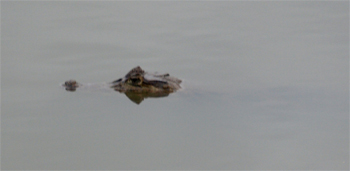
Caiman |
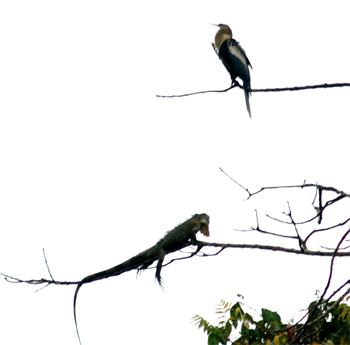
Iguana and Ahinga
|
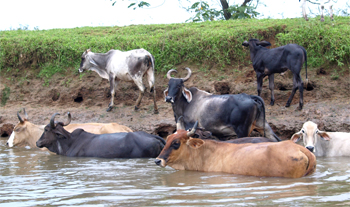
Local cows crossing the river |
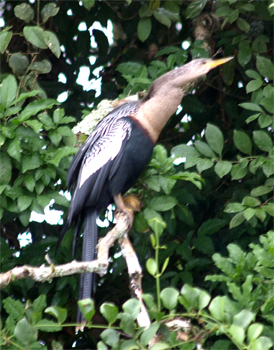
Ahinga
|
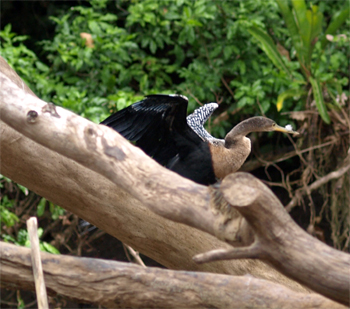
Ahinga |
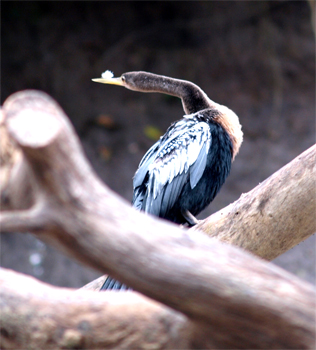
Ahinga
|

Great Kiskadee
|
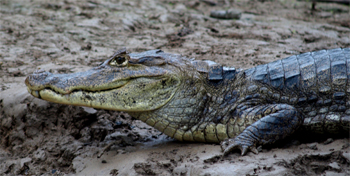
Caiman |
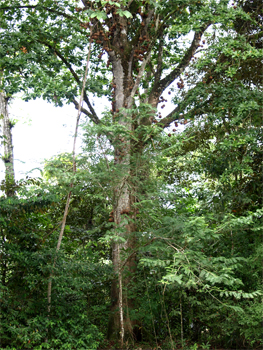
Cannonball tree (gourds)
|
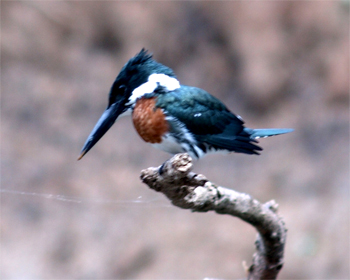
Amazon Pygmy Kingfisher |
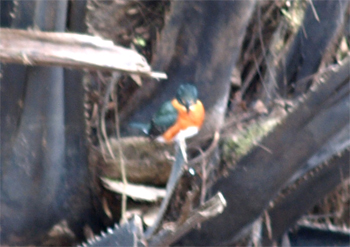
Amazon Pygmy Kingfisher (from a moving boat and in the rain)
|
We came back to the lodge for breakfast and were treated to CR omelets made with corn, baloney, tomato, and onion. The cook grilled the veggies and then poured scrambled eggs over them. We also had meat empanadas and wonderful French toast with sugarcane syrup. We passed on the beans and rice this morning.
After breakfast we planted some trees at the edge of the lodge grounds. The idea is to plant trees that are favored by the area wildlife to increase their habitat. |
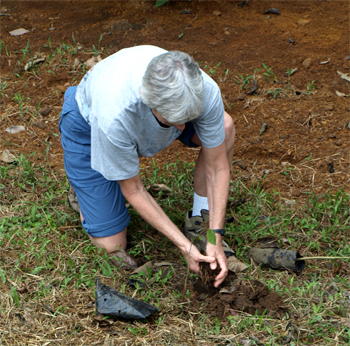
Planting trees
|
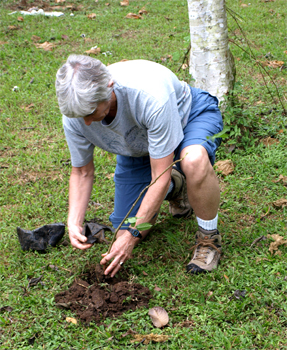
Planting trees |
We rode the bus the three blocks into town to learn about the turtle project here. Since the percentage of turtles that hatch and live to four years, when they are mature enough to procreate, is so low, seven families from Cano Negro collect the turtle eggs in January, February, and March, incubate them in sand and dirt like where they were found, control the temperature (warm yields females, cooler, males and in between temperature yields both sexes), and then release most of them and sell the rest to support themselves and the project. This control supposedly increases the chances of the eggs hatching and the turtles surviving long enough to have some protection from birds, tapir, coatimundi, caiman, etc. because they have a harder shell as they age.
|
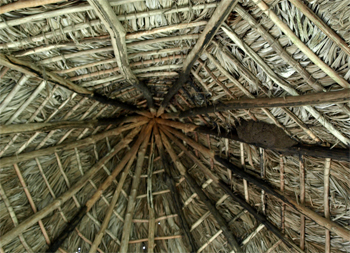
Ant nest in roof of structure at the Turtle Farm |

Turtle eggs
|

White turtle |
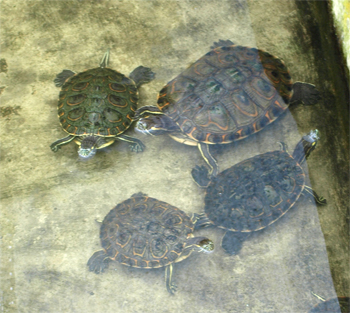
Turtles
|
Next we visited a lady whose business is growing butterflies at her home/garden. She sells them to people who frame them or use them for other crafts. Her garden was beautiful with all kinds of flowers and many orchids. Inside a net/screen greenhouse she grows the certain flowering bushes that her 14 varieties of butterflies need to live on.
The butterfly house was very peaceful and calming. The flower bushes were in bloom and the different butterflies were flitting all over. Some were red and black, some were florescent blue on one side and brown with “owl eyes” when the wings were closed, and others were orange and black.
|
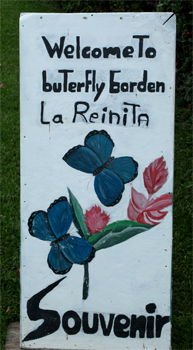
|

Butterflies emerging from the chrysalis |
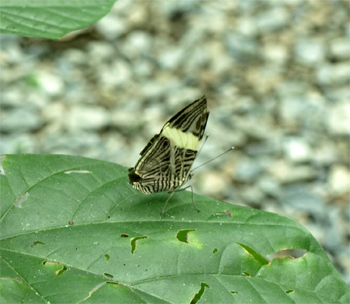
Butterfly Garden |

Butterfly Garden
|
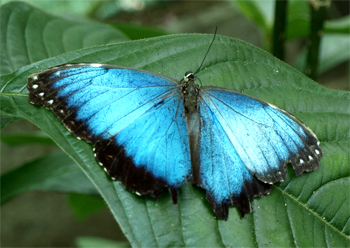
Butterfly Garden
|

Butterfly Garden |
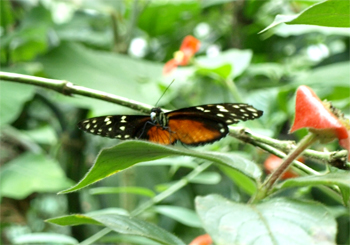
Butterfly Garden |

Butterfly Garden
|
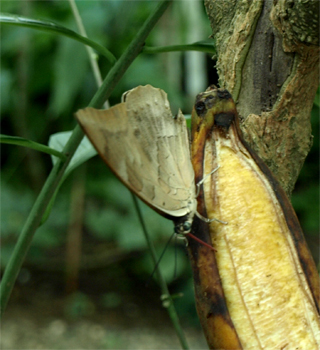
Butterfly Garden
|
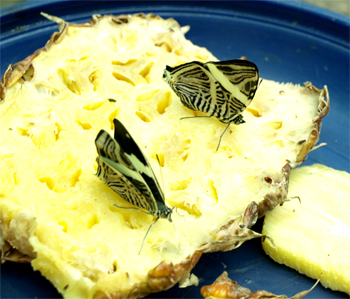
Butterfly Garden |

Butterfly Garden |
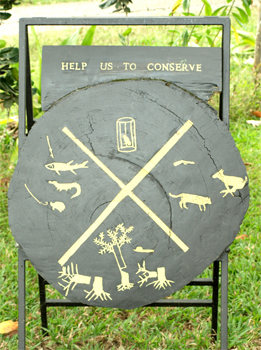
Butterfly Garden
|
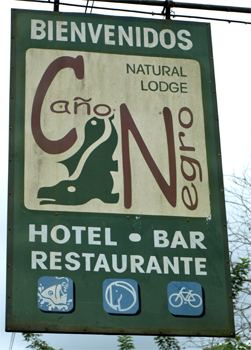
Cano Negro Lodge
|
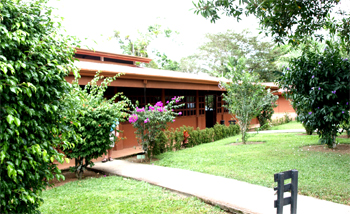
Cano Negro Lodge - Dining hall and bar |

Cano Negro Lodge - tree on grounds
|

Cano Negro Lodge - our rooms |
After lunch at the lodge, Marge, Leo, and three others went to the marsh to look for more wetlands wildlife. She added the roseate spoonbill and wood stork to her bird list.
|
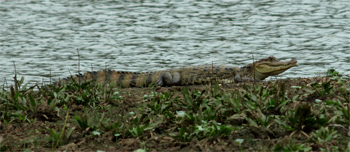
Caiman - he thinks he's hiding
|
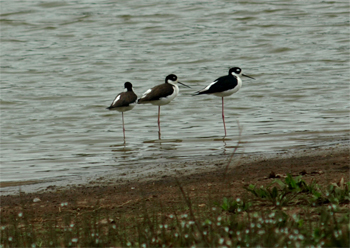
Stilts
|
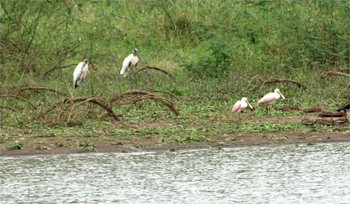
Wood storks (left) and Roseate spoonbills |
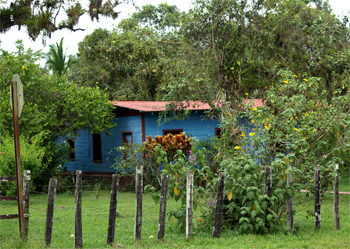
Local house
|

Local building |
At 4:30 Leo and Jose made us snacks at the pool bar. They peeled and cut up plantains, fried them in hot oil to soften them, smashed them flat with a little tortilla press, and refried them. This is my favorite – eating the plantains. Leo also used the oil to fry tortilla quarters into crispy hot chips and then mixed together tuna, onion, mayo, and lime juice to eat on the chips. It was fun watching the process and seems simple enough to do at home. We also enjoyed eating everything!
|

Jose and Leo cooking for us
|

Jose and Leo cooking for us |
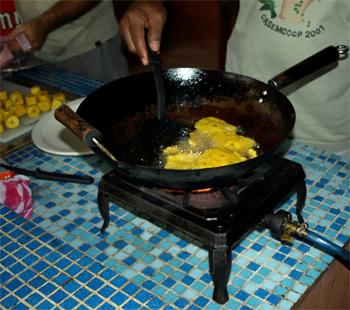
Jose and Leo cooking for us
|
Dinner was similar tonight but the mashed casaba was very good. The dining room was crowded and noisy tonight but there was no wait for the buffet lines and it is good that they are attracting tourists to this lodge and their programs. We have discovered that we are following another OAT group that is one day ahead of us and there is another one day behind us. We know now to swap information with them.








































